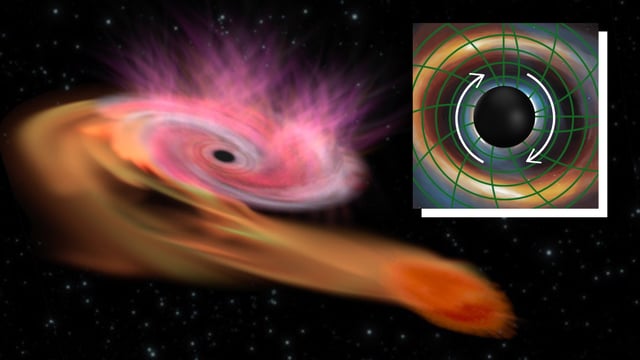Overview
- Researchers calculated the spin speed of a black hole a billion light-years away using its wobbling accretion disk.
- The black hole's spin was found to be less than 25% the speed of light, slower than expected.
- The study utilized data from a tidal disruption event observed in 2020, named AT2020ocn.
- NASA's NICER telescope on the ISS played a crucial role in monitoring the event over several months.
- The findings open new avenues for understanding black hole evolution and spin distribution across the universe.



